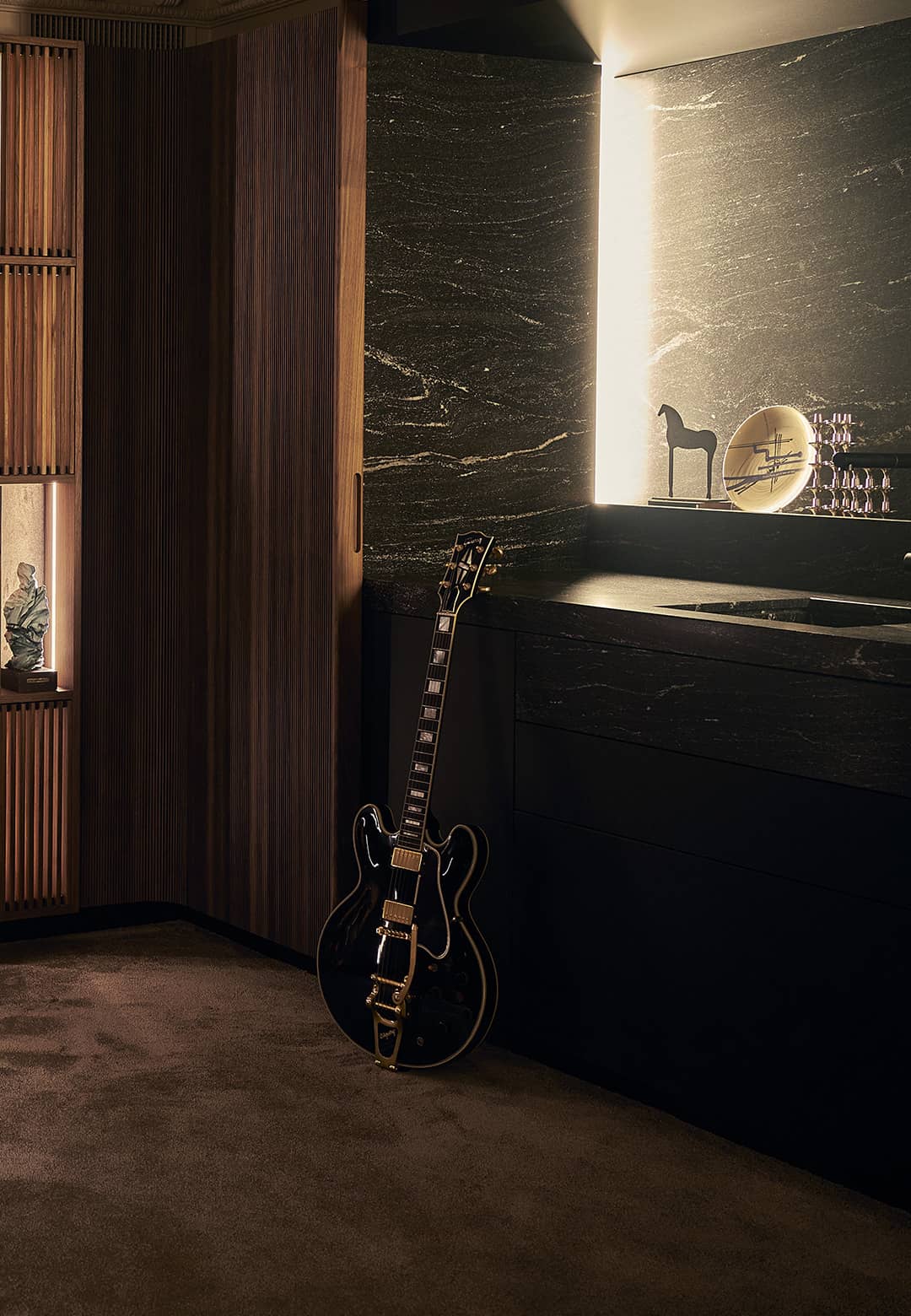Swing is a new kitchen product introduced by SCIC. Minimalism has fascinated the brand for a long time, but there is an ongoing return to the details and the richness of compositional and material nuances of the 30s and 40s furniture and the ironic lightheartedness of the products of the 60s, 70s and 80s.
The Swing model is a piece of furniture that has no appliance in sight, no technological element that references a certain period or a specific style, it represents a timeless design. It can pass as a living room, a study or a collectors’ room, perhaps storing whisky and cigars. The full-height, solid walnut wood handles are integrated into the door are an anti-industrial statement. Crafted with sheer manual skill and time, it is a complicated item that cannot be reproduced using only machinery. One needs glue, clamps, presses, sandpaper, but above all manual skills and time.
The pattern of the handle on the door allows you to move the compositions around through different levels, maintaining the profile’s unity and enhancing the plastic nature of the ribbed surface and by playing with the depths, the brand has openly declared that the doors are a stylistic and compositional element. The vertical lines of the surface help to pursue the concept of 'continuum' hiding the gaps between the doors and reiterating the principle of the Boiserie system with “hidden surprises”.
The unusual feature of Swing lies in the depth of its modules. In addition to the traditional kitchen furniture dimensions (350 and 600 mm), one can choose between two micro depths of 180 and 130 mm. So not it’s not just functional furniture or wall panels, but there’s also a third option: a piece of furniture that contains and displays one’s passions, in intimate environments, with smaller and more convenient dimensions.
The sliding shutters are non-structural, decorative elements that can be added at a later date. The cabinet is naturally arranged to accommodate them on each shelf, just by inserting a magnetic attachment, their 'free' nature and the easy positioning allows to transform the furniture look at any time. From a more orderly and rigorous look, one can, in fact, quickly switch to a chequered pattern or a completely random one.
SCIC wanted to focus on the element of surprise, the one rising in the observer that by opening or moving a door unexpectedly finds a fridge or an oven and only then realizes that what seems to be a 'piece of furniture' is actually a kitchen.






 Sign in with email
Sign in with email










What do you think?